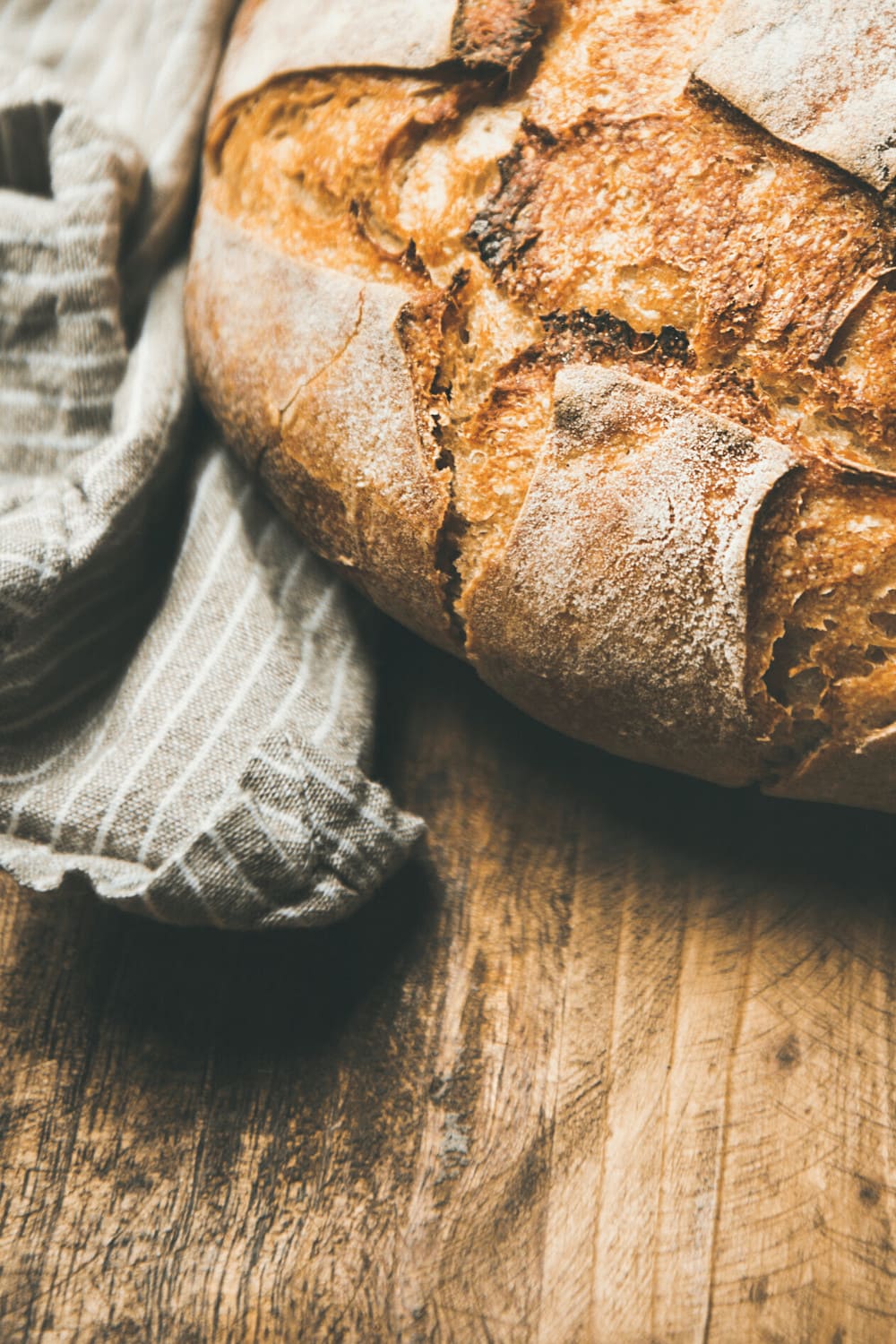
Servings: 1 round loaf
Ingredients
- Leftover buttermilk from butter-making — about 2 cups
- 3-4 cups of sifted einkorn wheat flour
- 1 teaspoon of sea salt
- 1.5 teaspoons baking soda
- ½ cup approximately fresh water
Instructions
- Sift einkorn flour with salt.
- In a large bowl, add 3 cups to the buttermilk. Lightly toss with spoon or spatula. Do not knead or overmix, just bring the flour and buttermilk together roughly. Gradually add the last cup of flour in and keep mixing.
- Cover mixture tightly and keep at room temperature overnight on your kitchen counter.
- The next morning, when ready to bake, take a large Dutch or French oven with a lid and flour the inside well. Place it in your oven and set it to preheat to 500° Fahrenheit.
- Once preheated, turn your attention to your einkorn-buttermilk mixture.
- Flour your work surface well.
- In half a cup (approximately) of water, dissolve the baking soda and add it into the einkorn-buttermilk mixture, adding more water if required to make for a relatively wet and sticky dough.
- Turn the dough onto the floured work surface and do not knead it, but rather fold it over itself 3-4 times, but no more.
- It is important not to overmix once the baking soda is mixed into the dough as this will hinder the bread from rising.
- Shape the dough into a high oval as in the video and flour the surface.
- With a sharp knife, cut a cross shape into the top of the dough, allowing it to flatten somewhat.
- Take the preheated Dutch or French oven out, place the dough into the center, and return it, covered, into the oven.
- Lower temperature and bake at 450° Fahrenheit for 30 minutes.
- Uncover and bake for an additional 5-10 minutes until deeply browned.
- Take the bread out and tap it on the back. If it makes a hollow sound, it is ready. Otherwise, return it to the oven for a few more minutes.
- Cover your baked bread in a tea towel and do not cut into it until it has completely come down to room temperature. You can sprinkle the tea towel with water to maintain moisture if desired ‚ this should not affect the crust.
- Enjoy with fresh, raw cream cultured butter, jam, pâté, fry a slice in bacon fat — or eat it however you wish. This bread will keep covered for several days.
Video
Tried this recipe?Let us know how it was!